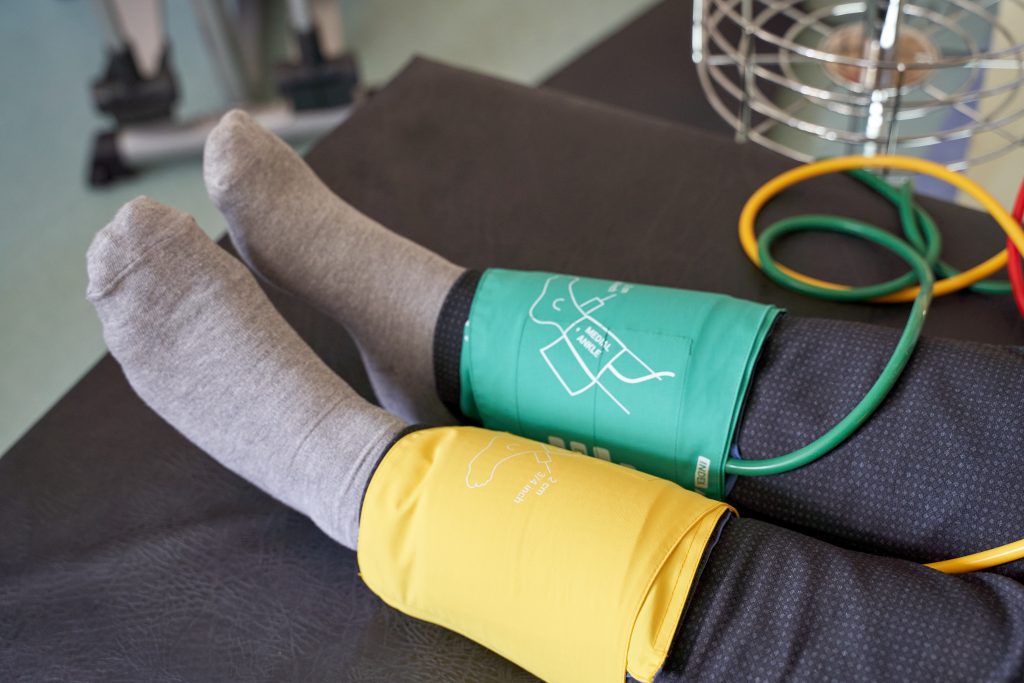Ankle-Brachial Index Test
Your provider may recommend that you have an ankle-brachial index test if you have symptoms of peripheral artery disease (PAD) or meet risk factors for this condition.
Why Have An Ankle-Brachial Index Test?
An ankle-brachial index test can help determine whether you have PAD so you can receive immediate treatment. When left untreated, PAD can lead to critical limb ischemia, a condition that can lead to tissue death and amputation of the affected limb. An ankle-brachial index test can help you avoid PAD and its complications, and allow you to work with your provider to improve your health and quality of life.
What Is An Ankle-Brachial Index Test?
The ankle-brachial index test is a non-invasive test that compares the blood pressure in your ankle with the blood pressure in your arm. The purpose of this test is to determine whether you have PAD, a circulatory disease that occurs when narrowed arteries reduce blood flow to your limbs.
What Does An Ankle-Brachial Index Measure?
Your provider will calculate your ankle-brachial index by dividing the blood pressure in your ankle by that in your arm. An ankle-brachial index number of 0.9 or lower often indicates the presence of PAD.
What Are the Risks?
An ankle-brachial index test is non-invasive and comes with no serious risks. You may feel some discomfort as the blood pressure cuffs tighten and inflate on your ankles and arms, though this discomfort is temporary and only lasts for the duration of the test.
What Are the Benefits?
The main benefit to having an ankle-brachial index test is being screened for PAD, especially if you are 55 years or older or meet the risk factors for PAD. Risk factors for PAD include leg pain while walking, diabetes, high blood pressure, high cholesterol, and being a smoker. An ankle-brachial index test can confirm whether you need treatment or should make healthy lifestyle changes to reduce your risk for PAD.
How Is the Ankle-Brachial Index Test Done?
First, your provider will have you lie down on your back. Next, your provider will take blood pressure readings of both your arms and ankles using inflatable blood pressure cuffs. Your provider may also use an ultrasound probe to listen to your blood flow. After the measurements of all four limbs have been collected, your provider will calculate your ankle-brachial index to determine whether you have PAD.
What Can I Expect After My Test?
You can resume your normal daily activities immediately following the ankle-brachial index test. If you are diagnosed with PAD, your provider may discuss all your available treatment options, along with healthy lifestyle changes you can make to improve your condition. Potential treatments for PAD include exercising regularly, taking medications to prevent blood clots, and having surgery to repair the blocked artery.
Healthcare Associates of Texas offers the ankle-brachial index test to those who may be at risk for PAD.